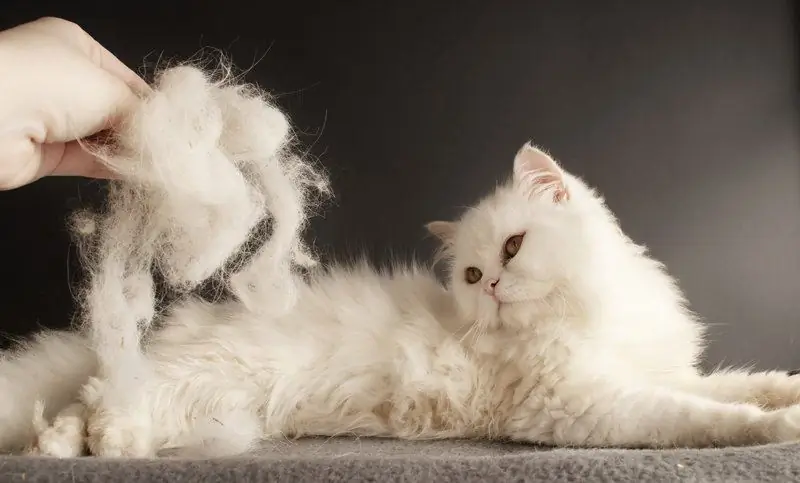
Table of contents:
- Author Bailey Albertson [email protected].
- Public 2023-12-17 12:53.
- Last modified 2025-06-01 07:32.
Molting in a cat: beauty requires sacrifice

In cases when a cat's molting is especially intense, its owner begins to worry about the health of the pet, since an experienced owner knows that profuse hair loss in some cases can be a symptom of the disease.
Content
- 1 What is molting
- 2 Seasonal molt and its timing
- 3 Features of molting of some breeds
-
4 Possible causes of severe shedding
4.1 Video: causes of prolonged molt
-
5 What to do if your pet sheds heavily
- 5.1 Video: strong molt in a cat
- 5.2 How to get rid of excess hair during seasonal shedding
- 5.3 Normalization of nutrition and intake of vitamins
- 5.4 Creating a suitable temperature setting
- 5.5 Diagnosis and treatment of diseases
-
6 Proper grooming of your cat's hair
6.1 Video: how to comb a cat during molting
- 7 Reviews of cat owners
What is molting
Molting in cats is a change in the coat. In most cases, it is characterized by seasonality, since the main purpose of molting is to ensure optimal thermoregulation.
Molting is a complex process involving the endocrine, nervous and immune systems. If an imbalance occurs in any of them, the nature of hair loss, its duration and intensity change.
Seasonal molt and its timing
Seasonal molting occurs twice a year: from February to March, the cat gradually prepares for summer, getting rid of winter fur, and from September to October, on the contrary, it seeks to make room for a warm winter coat. The timing of molting can shift depending on the breed of the cat, the climatic zone of its habitat, as well as the living conditions of the pet, but on average it covers 2-3 weeks.
During molting, the cat's behavior may change somewhat: it becomes less active, often grooming itself, some pets become irritable. But the general condition should not suffer at the same time: the nose should be cold, the eyes should be clean, the food has been eaten, and the tray should be visited on schedule.
During normal shedding, the amount of hair shed by the cat increases, but does not become excessive. Replacement occurs evenly, without the formation of patches of alopecia areata (baldness).
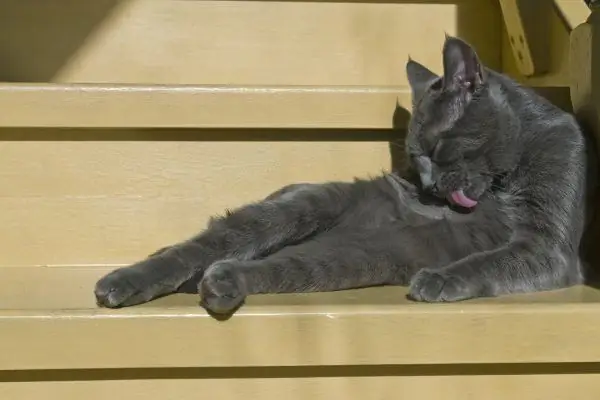
During molting, the cat often licks itself, removing dead hairs
Features of molting of some breeds
How a cat will shed is largely determined by its breed. The amount of hair left by a shedding cat is influenced not only by the length of its coat (guard hair), but also by the density and length of the undercoat.
If we consider the breeds of cats according to the intensity of molting, then they can be divided into:
-
strong shedding, having a lot of undercoat:
- Persian and Himalayan cats;
- Maine Coon;
- British cat;
-
breeds with a moderate severity of molting - they have long hair, but the undercoat is much smaller, the long hairs that have fallen out are easy to remove:
- angora cat;
- Somalia;
- Burmese cat;
- balinesis;
- American curl;
-
breeds with mild shedding, no undercoat, shedding quickly and imperceptibly:
- Siamese cat;
- abyssinian cat;
- burmese;
- bengal cat;
- Singaporean cat;
-
breeds with minimal molting, artificially bred:
- sphinxes - depending on the variety, wool may be completely absent or its length may be no more than 2 mm;
- Rex - Rex hair is very short and wavy;
- la-perm - curly wool, has no undercoat, falls out completely during molting.
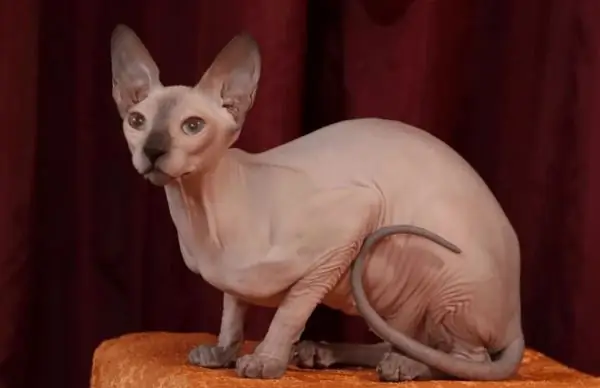
Sphynx shedding is minimal due to the almost complete absence of hair
Possible causes of severe shedding
The reasons that molting ceases to be seasonal in nature, and its period stretches, in healthy cats can be:
- Keeping a cat in an apartment, especially when it does not have access to the street. The cat continues to molt throughout the year as it loses its seasonal biorhythms. This is due to the fact that the temperature regime of the apartment does not have seasonal fluctuations, and in winter, with the inclusion of central heating and a decrease in air humidity, molting in a cat even intensifies, while the animal is completely healthy and has good nutrition and good care.
- Baby shedding. In half-year-old kittens, the soft children's fur is replaced with a coarser adult one, which is thicker, harder and brighter. At the same time, the patterns on the wool become more contrasting, the existing "points" become bright, and the fading and softness of the wool characteristic of kittens disappear. Infant molting lasts 1-2 months and marks the beginning of hormonal maturation. The full structure of the coat will complete its formation only by the age of 2.5-3 years, and the cat will have well-defined guard hair, undercoat, as well as dressing hair, which serves as an adornment of many breeds and is located on the cheeks, chest, frills, and tail.
- Pregnancy and breastfeeding. In pregnant and lactating cats, severe molting may occur, up to the formation of foci of local alopecia (baldness). This is due to a change in both hormonal levels and metabolism, since the body of a pregnant and then lactating cat directs most of the nutrients consumed by her to form kittens, and then feed them. After the end of feeding, the cat's coat returns to its previous appearance.
- Elderly age. In older cats, a thinning of the coat is observed, the fur becomes not so "stuffed", this is especially noticeable on the head - behind the ears of the cat, as well as on its face.
- Stress. As a rule, the cause of stress in cats is abrupt changes in its habitat, to which it takes effort to get used to. This can be a move, the appearance of a new pet, an unkind attitude towards a cat, and even quarrels between people.
-
Incorrect grooming of the coat. The meaning is usually:
- selection of shampoo and conditioner for hair care, their use according to the instructions - with a given frequency and correct dilution;
- the quality of cat brushes and other grooming tools;
- the frequency of combing, which differs in different breeds and is dictated by the structure of the coat.
Video: causes of prolonged molt
Excessive shedding can be a symptom of a cat's health problems caused by both internal and external factors:
- allergies, including to food components, medicines and cat care products;
- infection with external parasites - fleas, lice;
- tick-borne skin infections - demodicosis, notoedrosis, otodecosis;
- fungal skin infections - microsporia, trichophytosis;
-
endocrine disease:
- violations of the production of thyroid hormones or sex hormones;
- diabetes mellitus;
- excess adrenal function;
- helminthic invasions - cause a deficiency of nutrients, which does not allow maintaining a good condition of the coat, and also lead to disturbances in the functioning of the immune system, manifested in its allergic restructuring, suppression of immunity;
-
viral infections - hair loss can be caused by the presence of chronic viral diseases that suppress the immune system and lead to the appearance of bacterial dermatitis, accompanied by hair loss:
- viral immunodeficiency;
- viral leukemia in cats;
- the effects of certain medications in the treatment of chronic diseases, for example, cytostatics, causes hair loss and inhibition of its growth (after the end of the course of treatment, the wool is restored);
-
chronic diseases of internal organs, leading both to metabolic disorders and to a decrease in their digestibility from food:
- fatty hepatosis;
- chronic pancreatitis;
- renal failure;
- chronic colitis;
-
unbalanced nutrition, manifested in a violation of the ratio of the main components, especially when the cat tends to eat a certain type of product, as well as a deficiency:
- essential amino acids;
- polyunsaturated fatty acids;
- vitamins and minerals.
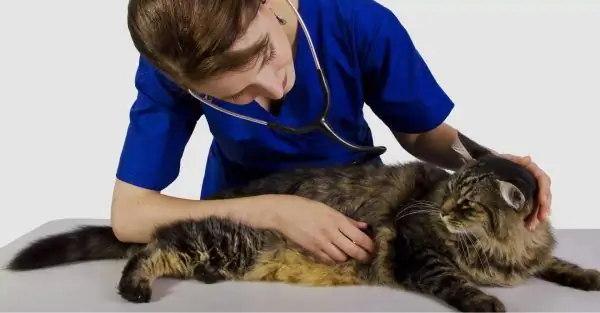
With prolonged molting, you should contact your veterinarian to rule out the presence of the disease
What to do if your pet sheds heavily
To exclude diseases, as well as to receive recommendations for correcting pet care, you should visit a veterinarian.
If molting occurs excessively, but the general condition of the pet does not suffer, the influence of external factors should be assessed, the effect of which can be changed:
- nutritional balance;
- ambient temperature and humidity;
- sufficiency of care measures;
- the presence of sources that provoke stress in the cat.
If we are talking about the high intensity of molting of a pet that has a breed predilection for it, age-related molting of a kitten or an elderly cat, as well as a pregnant or lactating cat, then these are natural processes.
Video: a strong molt in a cat
How to get rid of excess hair during seasonal shedding
To alleviate the condition of the cat with a seasonal change of wool, as well as to reduce its amount in the apartment during molting, change the care of the animal:
-
They start combing the short-haired cat - daily, long-haired - twice a day. For combing, select a comb suitable for the type of pet's hair: for short hair, a mitten brush will be optimal, for long - a comb with long and sparse teeth. It is important that the teeth of the combs are not sharp and do not injure the skin of the animal, as well as the new growing undercoat. To reduce the amount of undercoat, it is very useful to use a furminator, which effectively removes dead and poorly adhered hairs.

Cat and furminator Furminator helps to efficiently comb out dead undercoat hairs
- They bathe the pet. In the first week of shedding, when hair loss is most intense, washing the cat with a shampoo suitable for its coat type can help to get rid of some of the dead hairs and also make combing easier.
-
They give drugs that facilitate the removal of hair from the intestine and prevent the development of bezoars (hairballs that can block the intestinal lumen).

Bezoar A bezoar is a ball of hair in a cat's stomach or intestines, densely matted from hairs and food debris.
-
Remove mats. If the initial moment was missed and the formation of tangles occurred, which are the result of tangling of dead and separated hair with live and well-fixed, then they must be got rid of as soon as possible. Mats deliver pain and discomfort to the cat, making the pet irritable and aggressive, and also disrupt the access of air to the skin, provoking the development of dermatitis. Also, the presence of tangles increases the number of skin parasites. The tangles are removed with ordinary scissors or with a special device - a collar cutter. If there are a lot of tangles, a decision should be made to cut the cat, a partial haircut can be a compromise - in the places where areas of matted wool are formed.

Koltunorezy Collars - devices that facilitate combing tangles
- Use the services of a professional groomer if the situation is completely neglected or there is neither time nor skills to provide appropriate care for the pet.
Normalization of nutrition and intake of vitamins
A veterinarian can help evaluate possible errors in the cat's nutrition. If the cat is on a ready-made industrial diet, consider switching it to a higher class diet, ideally to a holistic diet. It is possible that the food consumed by the cat contains low-quality protein and an insufficient amount of vitamins, minerals and trace elements, which worsens the condition of the coat. In addition, cheap feed very often causes allergies, chronic diseases of the digestive system, as well as metabolic disorders in animals consuming them. Therefore, changing feed can solve several problems at the same time.
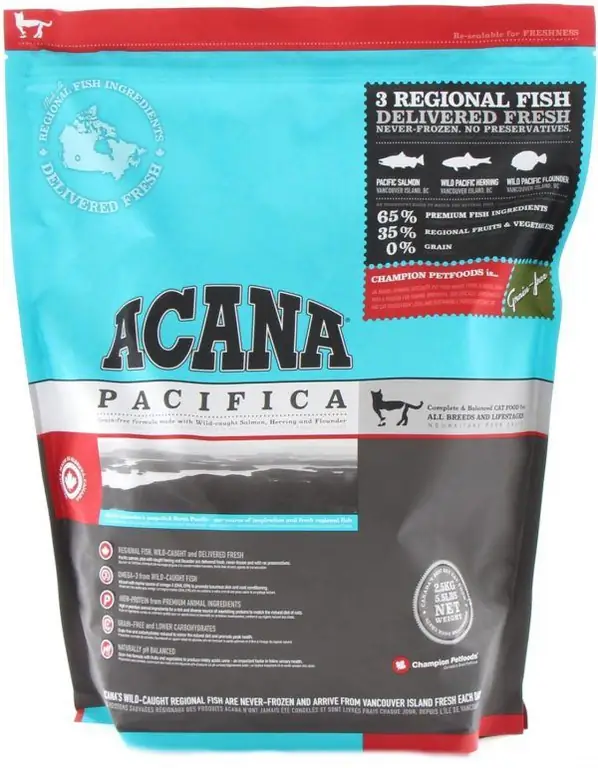
In case of excessive shedding caused by a lack of nutrients, switching the pet to a holistic class feed can help.
If the cat is on a natural diet, you should make sure that the diet is balanced. Often, the owners, following the lead of a capricious pet, feed it with their preferred products, for example, only meat, which causes an imbalance in the content of the necessary ingredients, prolongs and intensifies the molt. In agreement with the veterinarian, the cat can be given vitamin and mineral complexes designed to improve the condition of the coat to facilitate the course of shedding. They are taken in courses of 1 month 2 times a year.
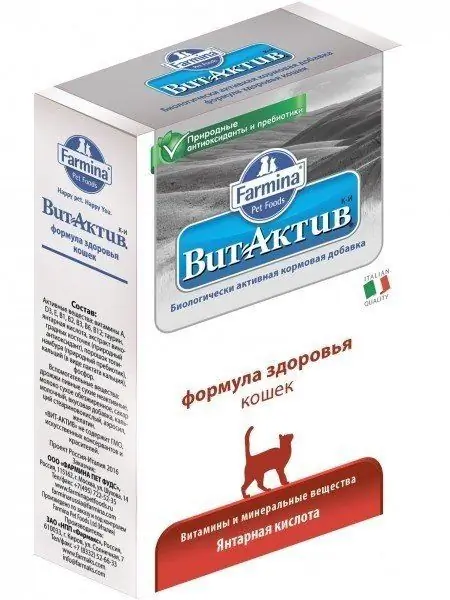
Vitamins should be given to the pet only in consultation with the veterinarian.
Creating a suitable temperature regime
In case of molting, provoked by high temperature and dry air in the apartment, especially during the heating season, you can try to adjust the temperature regime by partially closing the battery valves, turning off the air conditioner, and also regularly ventilating the premises. To increase humidity, you can use air humidifiers; in their absence, you can use containers with water placed around the house, and also place a damp cloth folded in several layers on batteries. The optimum temperature for keeping a cat is considered to be 18-20 o C; however, it can return to normal seasonal molt in accordance with the change in day length.
Diagnostics and treatment of diseases
If you suspect the presence of a disease, the symptom of which is increased molting, the veterinarian conducts:
- examination of the cat with an assessment of the condition of his skin, fur, claws, ears and mucous membranes;
- questioning the owner about the nature of molting, the impact of possible provoking factors;
-
blood sampling for analysis:
- general blood test - to assess possible inflammatory changes, anemia, allergies;
- biochemical blood test - to assess the functional state of internal organs;
- a study for the content of individual hormones to assess possible hormonal disorders;
-
in the presence of lesions on the skin:
- taking scrapings with microscopy;
- bacteriological crops of the collected material in order to identify the pathogen;
- histological examination of a tissue sample.
If necessary, additional studies can be assigned:
- Ultrasound of internal organs;
- analysis of feces in the absence of regular deworming, as well as suspected colitis;
- allergy tests.
When a diagnosis is established, treatment is carried out:
-
When an allergy is detected, the allergen is isolated and excluded. For food allergies, a hypoallergenic diet is prescribed. A course of desensitizing therapy that stabilizes the state of the immune system is carried out, they are used:
-
Suprastin;

Suprastin Suprastin is used for allergic reactions
- Tavegil.
-
-
With helminthiasis, anthelmintic drugs are given:
- Pratel;
- Milbemax.
-
When ectoparasites are found, means are used to eliminate them:
- Frontline;
- Stronghold.
- For tick-borne infections, for example, aversectin ointment is prescribed.
- Fungal infections are treated with drugs such as itraconazole, terbinafine, and ketoconazole.
- If chronic diseases of internal organs, endocrine glands, as well as chronic infections are detected, they are treated in accordance with the accepted standards of therapy.
- When the pet is stressed, they pay more attention and affection to it, if possible, eliminate the source of stress or give sedatives.
- In some cases, for example, with a gross violation of the activity of the gonads and a violation of their structure, surgical treatment is indicated - castration.
Taking proper care of your cat's coat
Regular and proper grooming of your cat's hair will make it easier for your cat to shed during the season and improve the condition of your cat's coat. Grooming depends on the length of the cat's coat.
Short-haired cats are combed 1-2 times a week using a comb with fine teeth, a furminator to remove dead undercoat, and a rubber brush to remove combed hair and massage the skin, which improves blood circulation to the hair follicles and strengthens the hair. You can use suede to add a gloss to the coat.
Long-haired cats are combed daily for 15-20 minutes. To care for a long-haired cat you need:
- ridges: sparse and frequent;
- furminator with long teeth for removing undercoat or slicker;
- metal brush;
- a soft brush to remove loose hair or a rubber brush.
The hair is combed in the direction from the tail to the head - this will get rid of more hairs. A comb with sparse teeth is used first, and then with frequent ones. After combing against the growth of the coat, the direction is changed. To remove the undercoat, a furminator or a slicker is used - no more than 1 time per week. At the end of combing, the detached wool is collected with a soft brush, you can use a rubber mitten brush. Some owners prefer to supplement the grooming by stroking the cat with a damp hand to collect any remaining loose hair.

Regular grooming of the coat facilitates shedding
To make it easier to comb the coat, you can use a special powder. It is better not to use natural bristle brushes, as they are not hygienic enough.
Cats are washed only when they get dirty or before exhibitions. Frequent bathing can negatively affect their coat. When washing, use only zoo shampoos.
Video: how to comb a cat during molting
Cat owners reviews
Molting is a natural process of changing the coat, which can be disturbed under the influence of external factors - nutritional conditions, maintenance, as well as internal ones - with the development of various diseases. Changing the course of molting is also possible for physiological reasons - when kittens grow up, aging in elderly pets, pregnancy and lactation in furry mothers. A veterinarian can help identify and neutralize the factor that caused the change in the course of molt. Taking care of the pet's hair, a full diet, as well as taking vitamin and mineral supplements, if prescribed by a doctor, will help facilitate the course of molting.
Recommended:
One Or Both Eyes Of A Cat Or Cat Are Watering: Why, What To Do And How To Treat A Kitten And An Adult Animal At Home

Lachrymation in cats looks like it is formed. Causes of lacrimation in a healthy and sick pet, breed predisposition. Prevention
How To Clean The Ears Of A Cat Or A Cat At Home, Than To Clean Them For An Adult Animal Or Kitten For Preventive And Therapeutic Purposes
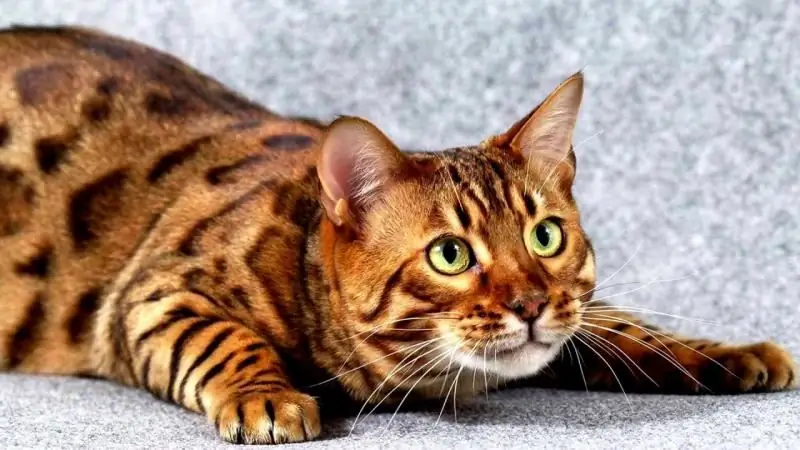
Causes of ear contamination in cats. Common ear diseases, what care products to use, how to protect yourself from a cat while cleaning your ears
Cat's Or Cat's Eyes Fester: Reasons For What To Do And How To Treat A Kitten And An Adult Animal At Home, How To Wash It Out Of Pus
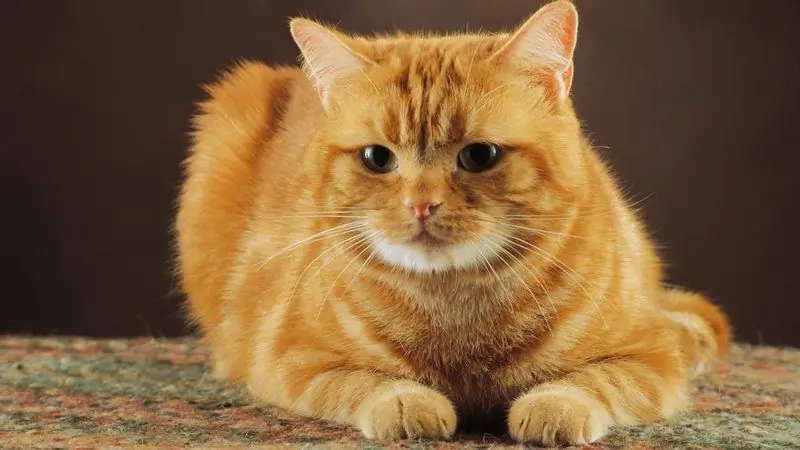
What does purulent discharge from the eyes look like in cats? For what diseases does the symptom occur? How is it treated. Care recommendations. Preventive measures
Why Does A Cat Or Cat Meow Constantly, The Reasons For This Behavior In Adult Animals And Kittens, What To Do If They Walk Around The House And Yell At Night
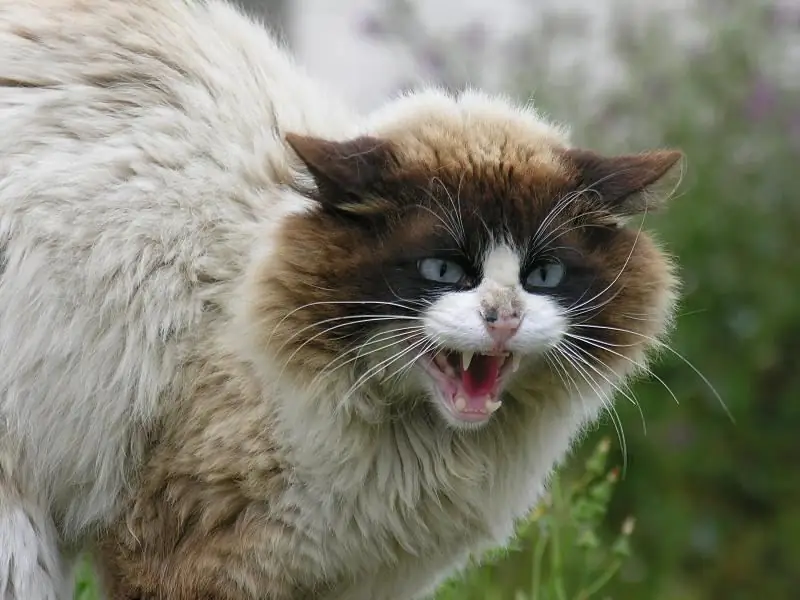
The reasons why a cat or kitten meows constantly. How to deal with it. When do you need to urgently see a doctor?
Why Does A Person Twitch And Shudder In Sleep, Including When He Falls Asleep

Why does a person shudder in a dream, including when he falls asleep, or twitches violently. Causes, especially in children and adults
